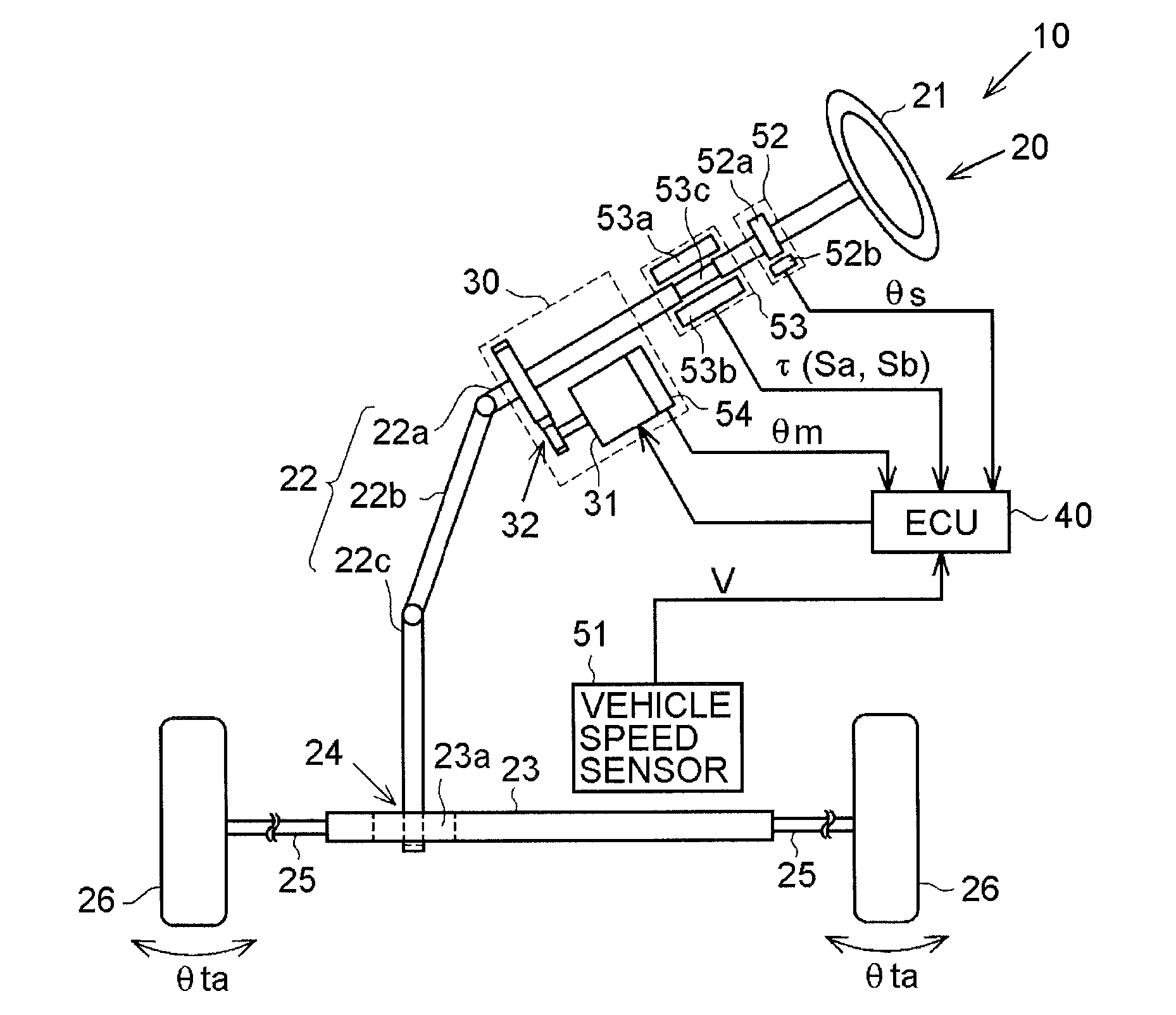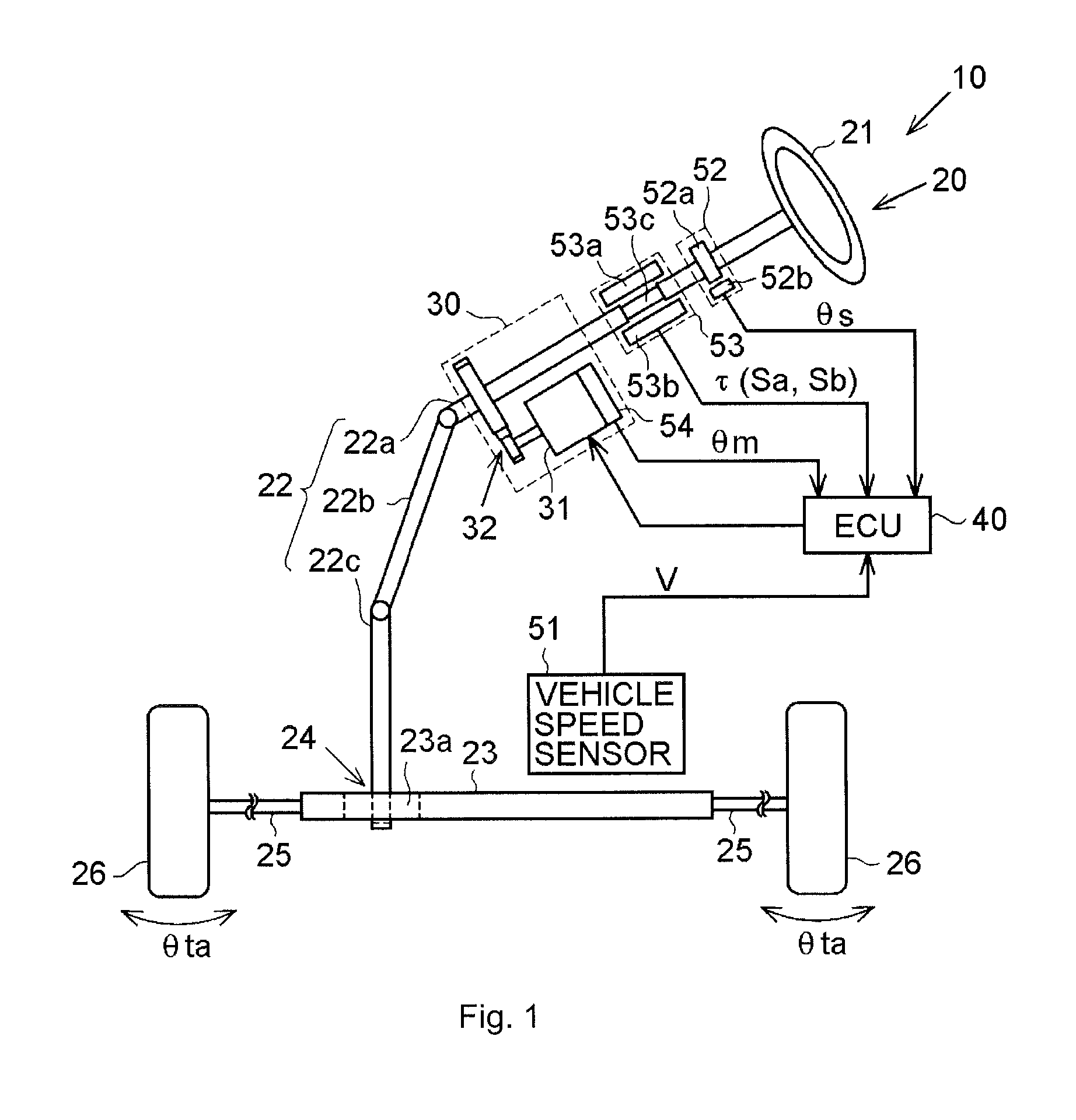Electric power steering system
a technology of electric power steering and steering wheel, which is applied in the direction of steering initiation, instruments, vessel construction, etc., can solve the problems of vibration in the steering, the abnormality of the torque sensor caused by other factors may not be detected, etc., and achieve the effect of suppressing the occurrence of unintended steering behavior
- Summary
- Abstract
- Description
- Claims
- Application Information
AI Technical Summary
Benefits of technology
Problems solved by technology
Method used
Image
Examples
first embodiment
[0024]An electric power steering system will be described below with reference to FIGS. 1 to 7. As shown in FIG. 1, an electric power steering system (EPS) 10 includes a steering mechanism 20 that causes steered wheels to be steered on the basis of a steering operation performed by a driver, a steering assist mechanism 30 that assists the steering operation performed by the driver, and an electronic control unit (ECU) 40 that controls the operation of the steering assist mechanism 30.
[0025]The steering mechanism 20 includes a steering wheel 21 operated by the driver, and a steering shaft 22. The steering shaft 22 includes a column shaft 22a, an intermediate shaft 22b, and a pinion shaft 22c. A lower end portion of the pinion shaft 22c meshes with a rack shaft 23 (rack teeth 23a) that extends in a direction intersecting the pinion shaft 22c. A rotational motion of the steering shaft 22 is converted to a reciprocating linear motion of the rack shaft 23 by a rack and pinion mechanism ...
second embodiment
[0112]In the second embodiment, in the determination of Step S603 in the flowchart of FIG. 10, the steering speed cos is compared with the steering speed determination threshold ωsh. However, the steering speed determination threshold ωsh may be made different from the value used in the steering speed gain map 85.
[0113]In each of the above-described embodiments, the assist control unit 72 may execute various kinds of compensation control, for example, torque differentiation control. In this case, the assist control unit 72 calculates a compensation component (torque differentiation controlled variable) based on a differential value of the steering torque τ, and adds the compensation component to the basic assist controlled variable Ias*. This enhances a response with which the assist force is applied with respect to a change in the steering torque τ. Note that when the above-described so-called reverse gain failure has occurred, the plus or minus sign of the compensation component i...
PUM
 Login to View More
Login to View More Abstract
Description
Claims
Application Information
 Login to View More
Login to View More - R&D
- Intellectual Property
- Life Sciences
- Materials
- Tech Scout
- Unparalleled Data Quality
- Higher Quality Content
- 60% Fewer Hallucinations
Browse by: Latest US Patents, China's latest patents, Technical Efficacy Thesaurus, Application Domain, Technology Topic, Popular Technical Reports.
© 2025 PatSnap. All rights reserved.Legal|Privacy policy|Modern Slavery Act Transparency Statement|Sitemap|About US| Contact US: help@patsnap.com



